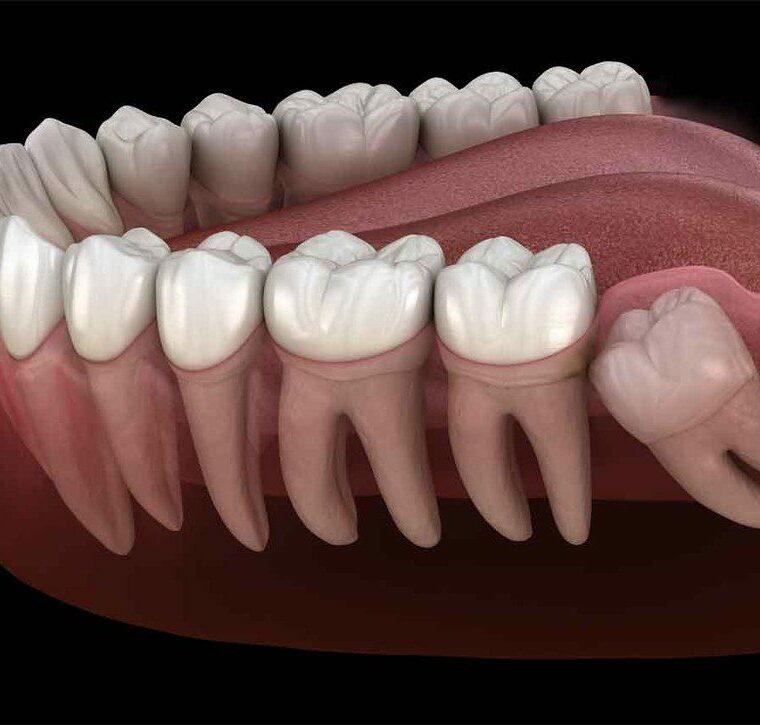Impacted teeth are teeth that remain under the gums or under the bone before their eruption is completed, even though it is time to erupt. They may remain completely buried in the jawbone, or they may be invisible in the mouth because they remain under the gums. Although some teeth are partially visible in the mouth, the rest may remain under the gums or bones. These teeth are called semi-impacted teeth. Impacted teeth are more common in the lower and upper wisdom teeth.
What are the intraoral symptoms of impacted teeth?
The most common symptoms of impacted teeth are; toothache, swelling around the jaw, bad smell in the mouth, redness and swelling of the gums, bleeding in the gums. When these symptoms are observed, it is necessary to consult a dentist and perform the necessary checks.
What are the factors that cause teeth to remain impacted?
While teeth remaining impacted may sometimes be due to more than one reason, sometimes it may be due to only one reason. We can list the reasons why teeth remain impacted as follows:
*Teeth cannot find space to erupt due to narrowness in the jaw,
*Due to the early extraction of milk teeth, the side teeth slide into the gap, closing the area where the tooth will erupt,
*Genetic factors,
*If the infection in the teeth is not treated, the underlying tooth may stop erupting due to this infection.
What is the impacted tooth surgery process?
Before the impacted tooth operation, necessary x-rays are taken from the patient to determine the location of the tooth, surrounding tissues, and its suitability for surgery. If the teeth are likely to cause damage to adjacent teeth and tissues, it is checked whether the teeth are suitable for orthodontic treatment. If the location of the impacted tooth is suitable for extraction, the patient is prepared for surgery. When starting the operation, first local anesthesia is applied to the patient. After numbness is achieved, the gum is removed to reveal the bone and tooth. If there is bone tissue on the tooth, the bone is eroded and the tooth is extracted. After the tooth is removed, the gum is closed again, stitched and the operation is terminated. The treatment process is completed with the removal of the stitches after one week. Following the instructions given by the dentist after the operation and using the drugs prescribed regularly will help to eliminate the problems that may occur after the operation.
